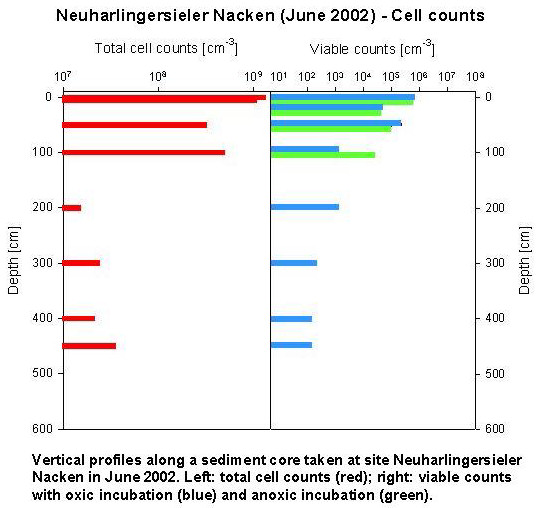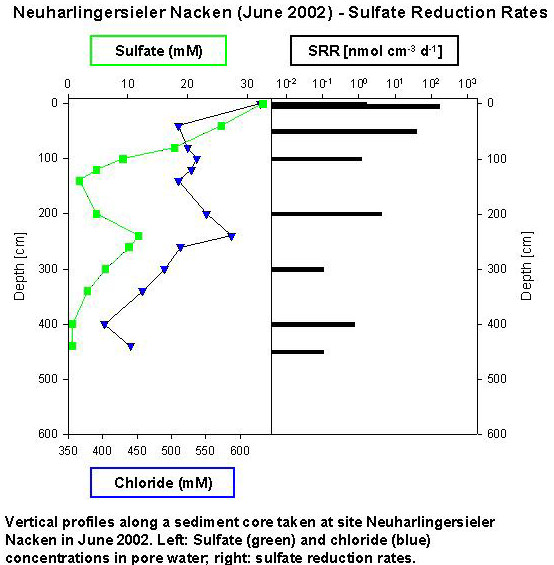
BioGeoChemistry of Tidal Flats
Microbial activities and cell numbers in the shallow subsurface
Within the marine environment, coastal sediments receive the highest amounts of organic material and exhibit the highest biogeochemical activities. Although cell numbers and microbial activities decrease with depth, it can be imagined that the majority of microorganisms in the sediment resides in the layers between several centimeters and a few meters depth. Until now, most investigations were restricted to the uppermost few centimeters of the sediments. To fill the gap of knowledge about the "shallow subsurface biosphere" we looked into the bacterial community composition, ecological adaptations, and microbial activities in sediments of a core from the Neuharlingersieler Nacken up to a depth of 4.5 m.
Total cell counts in sediments were determined by epifluorescence microscopy after staining with DAPI. Counts of viable microorganisms were determined by the most probable number (MPN) method under oxic or anoxic conditions using dilute substrate mixtures. Sulfate reduction rates were measured by use of radiotracers and application of the core injection method. Concentrations of sulfate and chloride were determined by ion chromatography.

Total cell counts in the sediment decreased exponentially from around 109 cm-3 at the surface to about 107 cm-3 at 450 cm depth. Viable counts determined under oxic or anoxic conditions were three magnitudes lower at 450 cm depth than at the surface. Up to 23 % of the total cell counts could be cultivated with medium supplemented with Fe(OH)3 as electron acceptor (data not shown). MPN counts with pasteurised samples corresponded to almost 100% of the MPN counts in untreated samples for sediment layers deeper than 100 cm (data not shown). Sometimes spores were stimulated by cultivation conditions, visualised by higher viable counts in pasteurised than non-pasteurised samples.
Sulfate reduction was detected at all depths with maximum rates at 5 cm depth. Even at 200 cm below the surface 4 nmol·cm-3·d-1 were measured. Sulfate reduction per total cell number in 400 cm depth was even as high as at the sediment surface. Even at several meters depth sulfate is available at elevated concentrations. The pore water profiles display a second sulfate maximum probably caused by lateral inflow of Wadden Sea water into the investigated sediments.

| <<back | All Publications | More details |